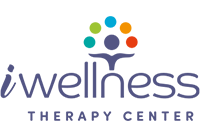What is neurofeedback?
Neurofeedback is an advanced form of biofeedback that allows you to see and train your brainwaves to cultivate healthy, effective, and efficient patterns of activity. Since all behaviors, sensations, and emotions are based on brainwave functioning, neurofeedback training can reduce stress and stress-related symptoms, regulate emotions, improve attention, concentration, and performance, and, in many cases, reduce or eliminate the need for medications for a variety of disorders. It is essentially a form of exercise for the brain that enhances flexibility and stability of the EEG.
Why does this work?
Just as you can learn to play the piano by practicing, your brain can learn to create new connections and improve its own performance. Scientists have proven that the more is much more adaptable, or plastic, than was originally believed. The brain learns by forming connections between nerve cells and making certain nerve pathways more available for use. For example, when you first learn to ride a bike, you have to think about every part of the process. As you practice, it becomes easier until you are even able to think about something else while your brain handles the riding details effortlessly.
In the 1960s Dr. Barry Sterman measured a particular EEG rhythm in cats and then showed that the cats could be trained to produce more of the rhythm by rewarding them with sweet, warm broth. By chance, he found out that the cats that had learned to do this were markedly less likely to have a seizure when exposed to large amounts of seizure-inducing chemicals. Subsequently, experiments on humans proved that the frequency of seizures could be reduced with the same type of training. It turns out that humans could also produce more or less of a specific rhythm by merely rewarding them with neurofeedback! It was later observed that, in the process of treating seizures with neurofeedback, the symptoms of ADHD were also decreased. Since these original neurofeedback studies were conducted, continued research has expanded the scope of applications and the clinical evidence in this field.
What is it used for?
There is evidence for the effectiveness of neurofeedback in assisting:
| · Addictions
· ADHD · Anxiety · Attachment disorders · Autism · Bipolar · Chronic fatigue · Chronic pain · Conduct disorder |
· Depression
· Eating disorders · Epilepsy · Learning and developmental disorders · Memory · Migraines · OCD |
· PTSD
· Sleep disorders · Stress · Speech disorders · Tourette’s syndrome · Trauma / developmental trauma |
Continuing research indicates the effectiveness of neurofeedback for many other conditions. In addition to addressing problem areas, neurofeedback can help you achieve peak performance in academics, arts, sports, and business.
How can it help so many problems?
Because the electrical activity in the brain is responsible for controlling our attention, thoughts, behaviors, and the regulation of all of our bodily systems, any changes in brain functioning can have a broad impact. Brain mapping actually lets us see the specific brainwave irregularities behind certain cognitive, emotional, and behavioral disorders. Neurofeedback then allows us to train the brain to correct the irregularities as the brain learns about itself, strengthens communications, and develops better self-regulation and integration. The results include positive changes in cognitive functioning, behavior, and mood, as well as decreased frequency of problems related to brain irritability, such as seizures, headaches, and panic attacks. If no particular problem is being targeted, then neurofeedback can help to optimize health by increasing the brain’s ability to self-regulate, focus, relax, and become more resilient.
How is it done?
Sensors are placed on the head to read the electrical activity or EEG in that area of the brain. The brainwaves are displayed on our computer while you watch a game on a separate monitor. As you produce more of the desired brainwaves and less of the unwanted patterns of brain activity, brain learning takes place. We can adjust the challenge as necessary to increase learning. This is essentially an advanced form of operant conditioning that has consistently proven to be successful in various forms of learning for over 60 years.
How will I know if it will work for me?
There is strong evidence for success in training the previously listed conditions, but as with any medical or other type of therapeutic intervention, it is not possible to predict a particular individual’s response. We work hard to assess the likelihood of effectiveness in your specific case with an in depth interview. In addition, we may sometimes recommend that a brain map (QEEG) or other testing be performed before proceeding. Personal factors such as nutritional status or co-occurring conditions can affect outcome and may need to be addressed before one can maximize the benefits of neurofeedback.
It is important to realize that we are conditioning brain pathways, but often the best results occur when neurofeedback is combined with other forms of treatment and/or some homework. For example, we may recommend some forms of muscle relaxation or breathwork for you to practice and we believe therapy combined with neurofeedback contributes to positive outcomes. Your commitment and involvement are crucial to your progress. In some cases, after the original presenting symptoms are relieved, it is then time to address the situations and/or sources that may have caused the development of those symptoms in the first place. This can be as simple as learning not to automatically respond with muscle tension or it can involve more in depth work in therapy. We want the best outcome and lasting results for each of our clients.

